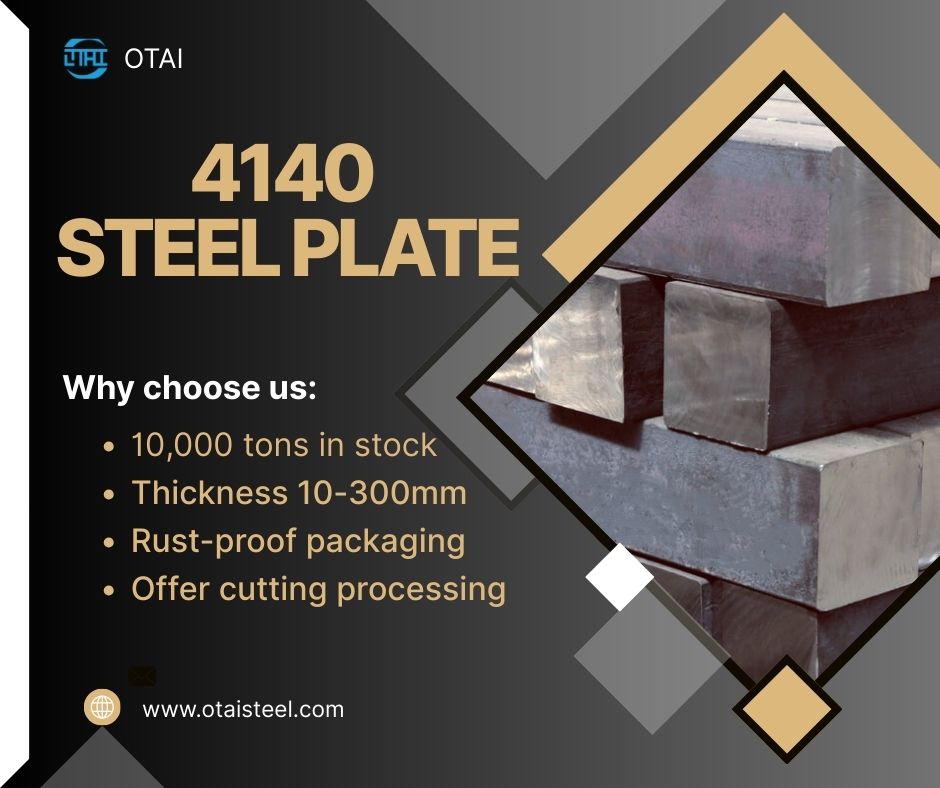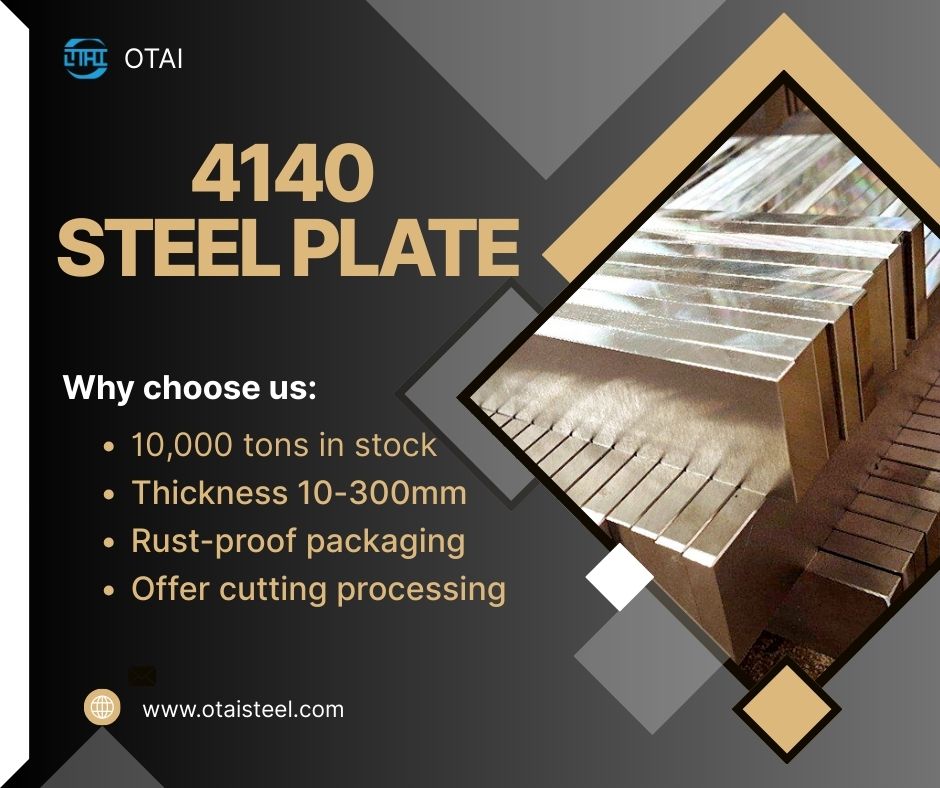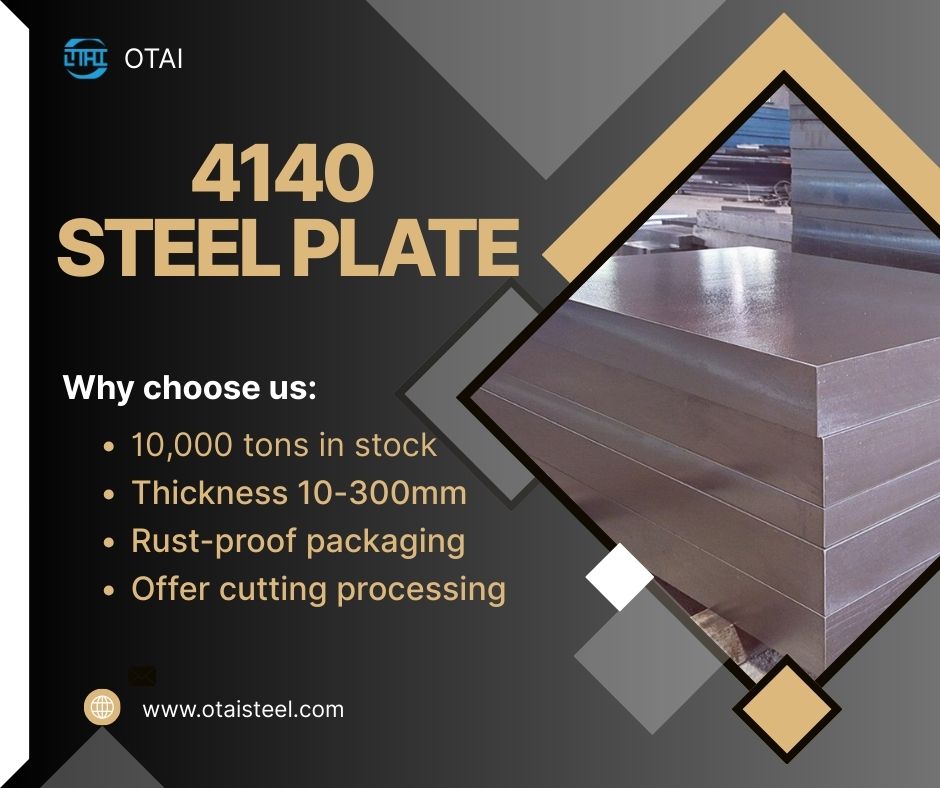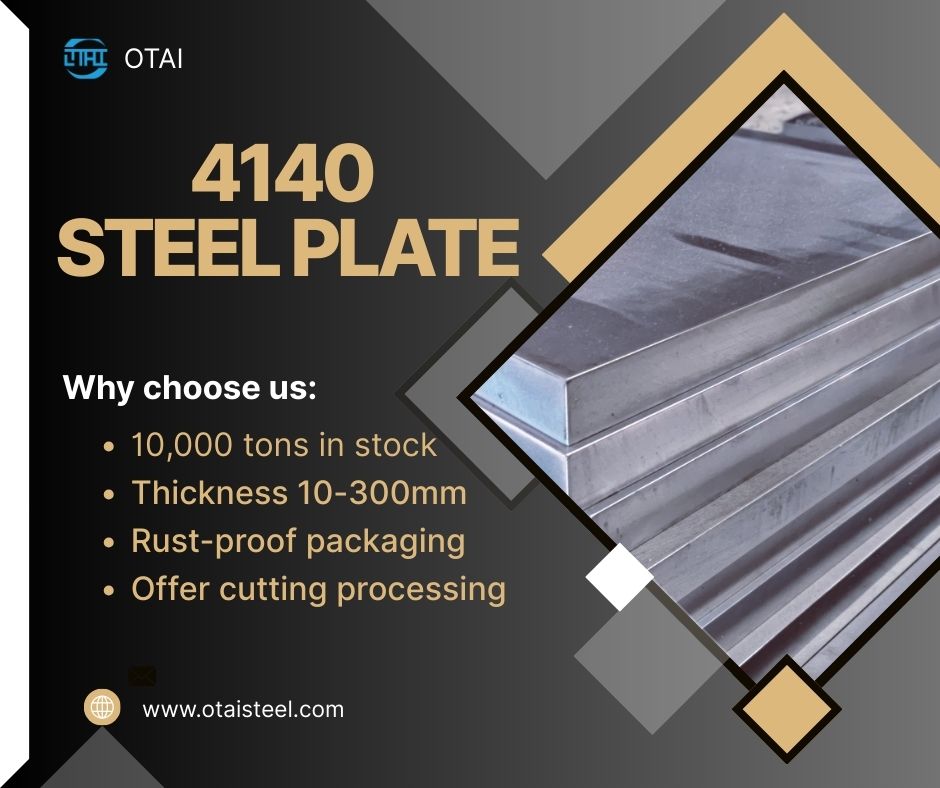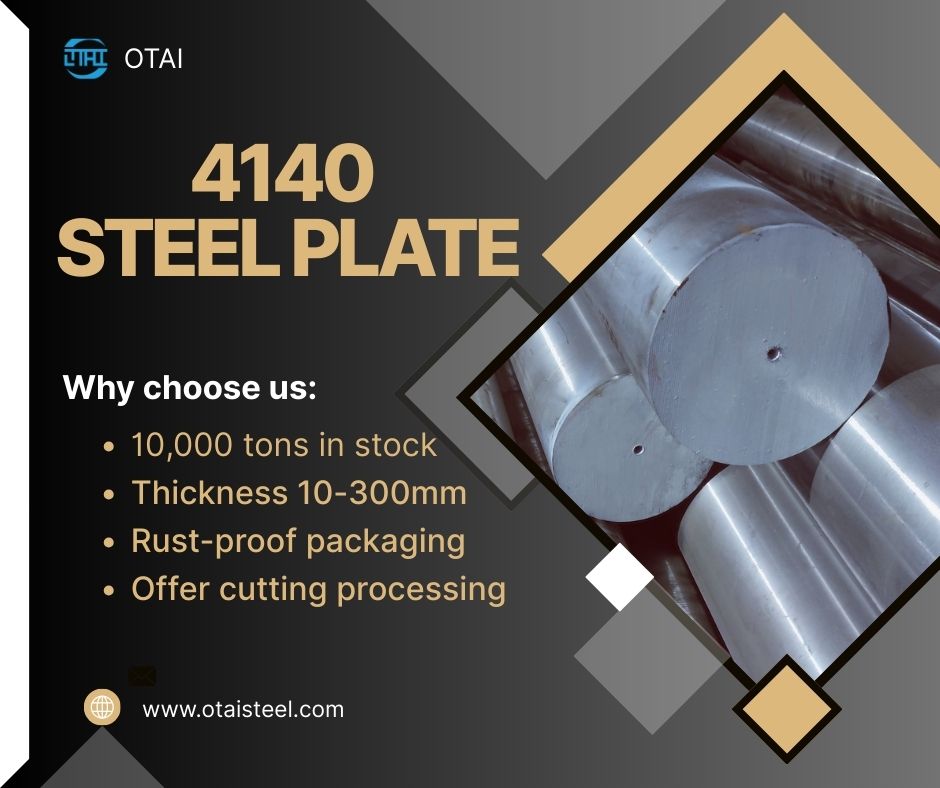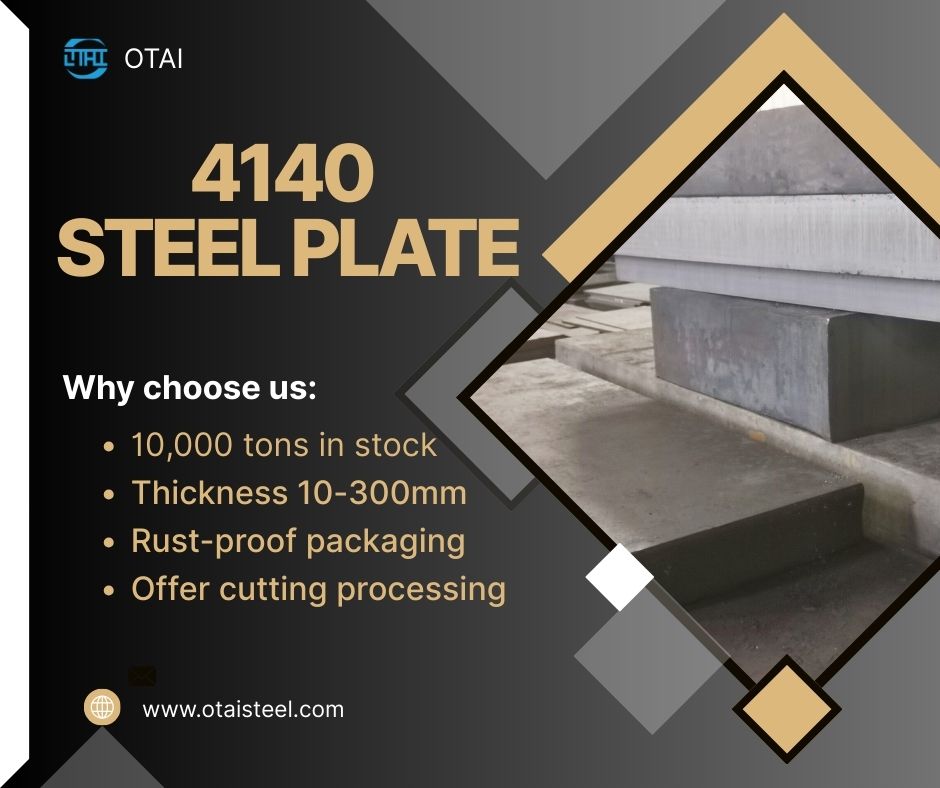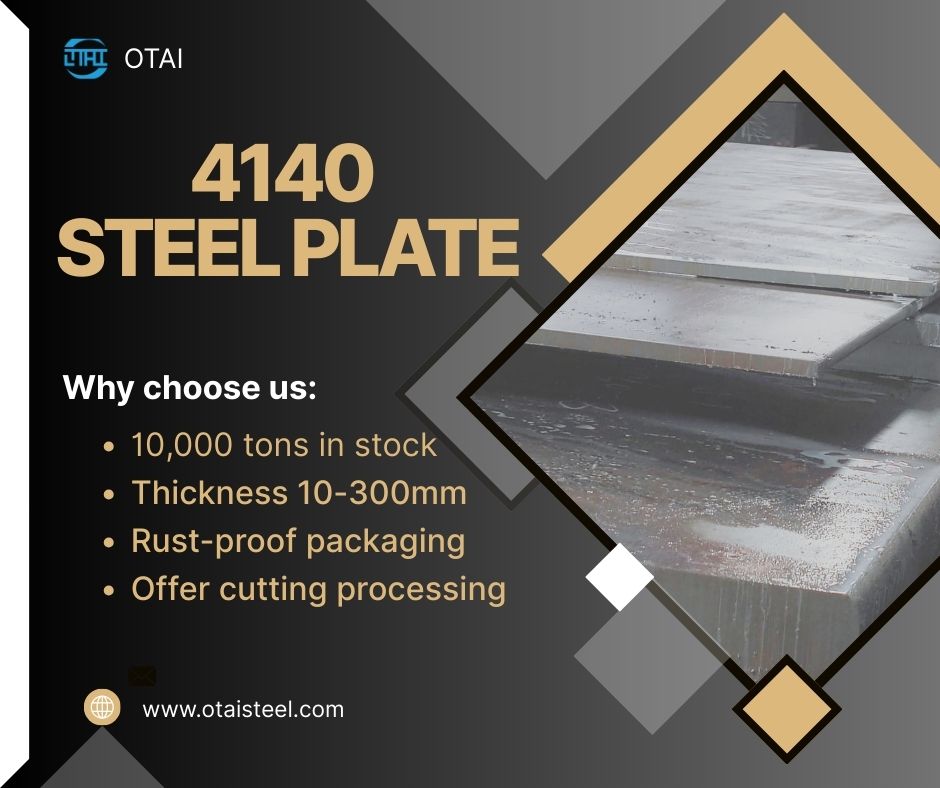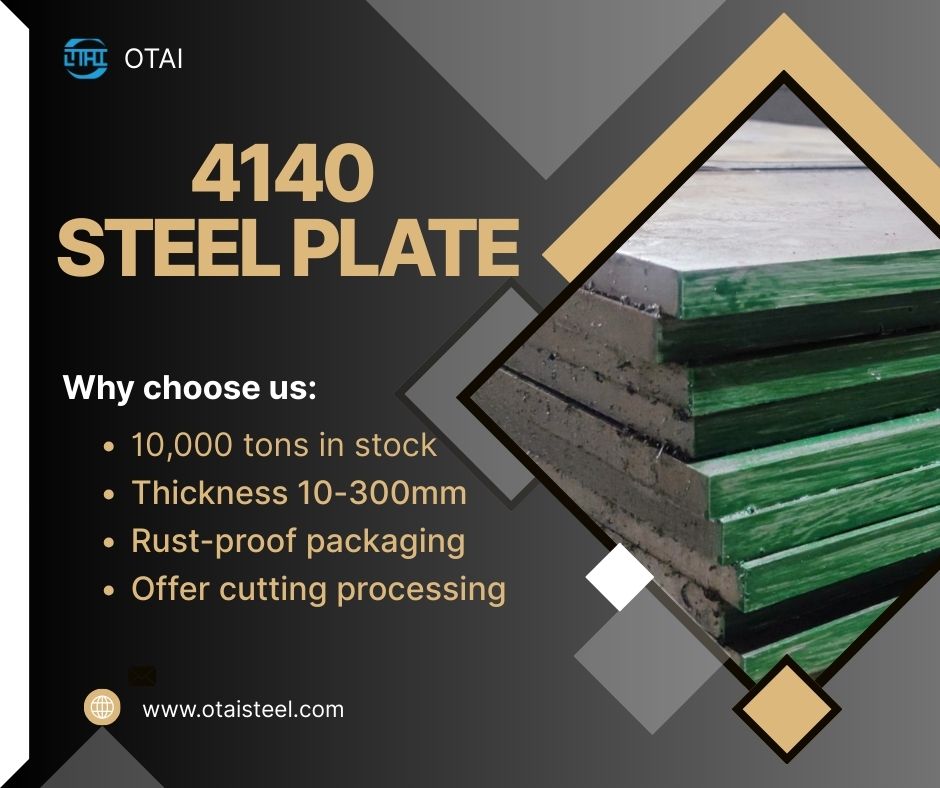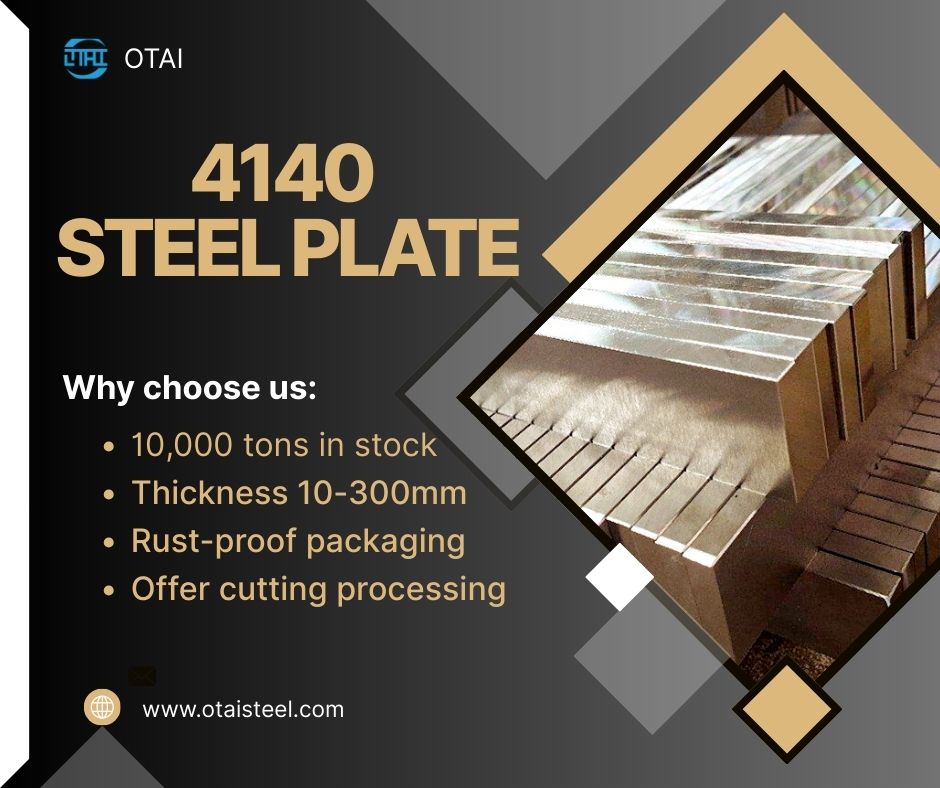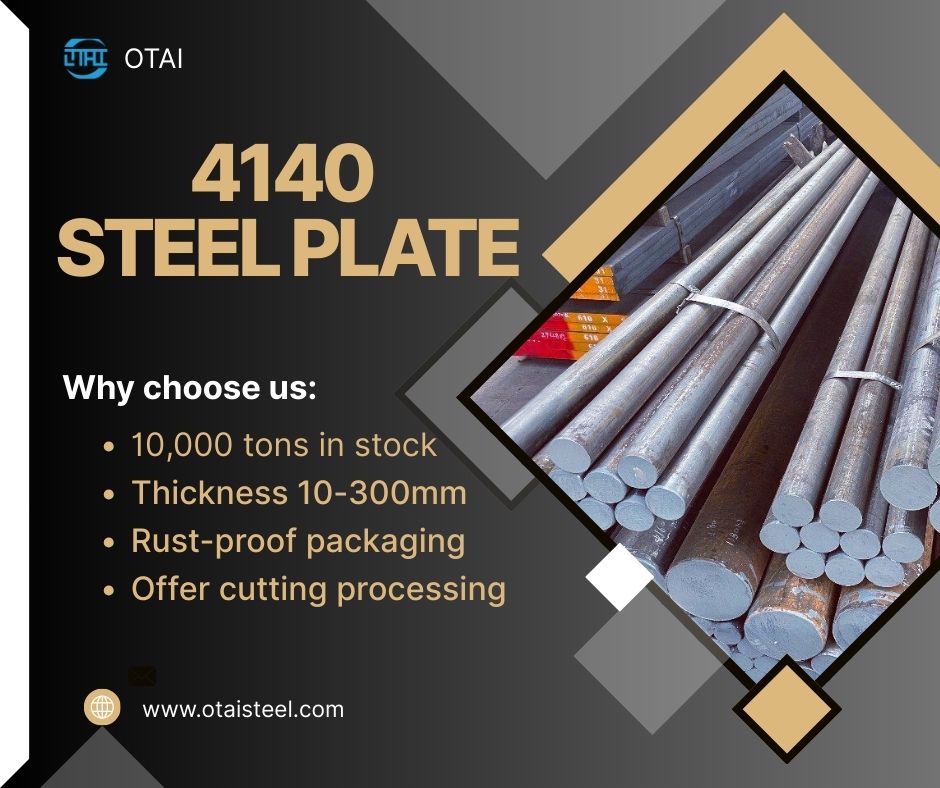 AISI 4140 Steel – Properties and Key Insights
AISI 4140 Steel – Properties and Key Insights
When engineers and manufacturers talk about versatile alloy steels, AISI 4140 steel always takes the spotlight. This chromium-molybdenum alloy has an impressive balance of strength, toughness, and wear resistance, making it one of the most widely used grades across industries. But what exactly makes it so special? Let’s dive deep into its chemistry, mechanical behavior, and real-world performance.
🌟 What is AISI 4140 Steel?
AISI 4140 steel belongs to the family of medium-carbon low-alloy steels. It is often classified as a “chromoly” steel because of its chromium and molybdenum content. These elements provide enhanced hardenability and strength compared to plain carbon steels.
In practice, this steel is supplied in multiple forms such as aisi 4140 round bar, aisi 4140 steel plate, and forged blocks, depending on customer requirements.
🔬 AISI 4140 Chemical Composition
The aisi 4140 chemical composition is carefully balanced to achieve excellent strength while maintaining toughness.
| Element | Content (%) |
|---|---|
| Carbon (C) | 0.38 – 0.43 |
| Manganese (Mn) | 0.75 – 1.00 |
| Chromium (Cr) | 0.80 – 1.10 |
| Molybdenum (Mo) | 0.15 – 0.25 |
| Silicon (Si) | 0.15 – 0.30 |
| Phosphorus (P) | ≤ 0.035 |
| Sulfur (S) | ≤ 0.040 |
The carbon provides the backbone for hardness and strength, while chromium boosts wear resistance and corrosion protection, and molybdenum enhances creep strength and high-temperature stability.
⚙️ AISI 4140 Mechanical Properties
The aisi 4140 mechanical properties vary based on its condition (annealed, normalized, quenched & tempered). Below is a summary in the quenched and tempered state, which is the most commonly used form:
| Property | Typical Value |
|---|---|
| Tensile Strength | 850 – 1000 MPa (123 – 145 ksi) |
| Yield Strength | 650 – 850 MPa (94 – 123 ksi) |
| Elongation at Break | 12 – 18 % |
| Impact Toughness (Charpy V-notch) | > 35 J |
| Hardness (quenched & tempered) | 28 – 32 HRC |
These values highlight the excellent balance between strength and ductility. Engineers appreciate how aisi 4140 steel hardness can be tailored by heat treatment.
🔥 Heat Treatment of AISI 4140 Steel
Heat treatment is where aisi 4140 heat treatment truly shines.
-
Annealing: Produces softness and machinability; typical hardness ~ 197 HB.
-
Normalizing: Refines grain size for improved toughness.
-
Quenching & Tempering: Achieves hardness up to 28–60 HRC depending on tempering temperature.
-
Nitriding: Produces a hard surface layer (~ 55–60 HRC) while maintaining a tough core.
This versatility allows engineers to customize properties for gears, shafts, or high-strength fasteners.
📈 AISI 4140 Steel Equivalent Grades
When sourcing globally, you’ll encounter equivalents to aisi 4140 steel equivalent standards:
| Standard | Equivalent Grade |
|---|---|
| DIN (Germany) | 42CrMo4 |
| JIS (Japan) | SCM440 |
| GB (China) | 42CrMo |
| BS (UK) | 708M40 |
This makes cross-border procurement easier and ensures performance consistency.
🛠️ Applications of AISI 4140 Steel
The adaptability of aisi 4140 steel applications makes it popular in critical industries:
-
Automotive: Crankshafts, connecting rods, gears.
-
Oil & Gas: Drill collars, tool joints, wellhead components.
-
Machinery: Shafts, axles, spindles, and hydraulic parts.
-
Defense & Aerospace: Landing gear parts, weapon components.
Its combination of fatigue resistance and strength ensures reliability under extreme conditions.
📊 Quick Hardness Reference
Below is a simple aisi 4140 steel hardness chart for different heat-treated conditions:
| Condition | Hardness |
|---|---|
| Annealed | ~ 197 HB (90 HRB) |
| Normalized | ~ 217 HB |
| Quenched & Tempered | 28 – 32 HRC |
| Nitrided Surface | 55 – 60 HRC |
This shows how flexible the steel can be in adapting to different performance requirements.
💡 Why Engineers Choose AISI 4140 Steel
-
High strength-to-weight ratio.
-
Excellent toughness even in large cross-sections.
-
Good wear resistance after surface hardening.
-
Compatibility with advanced machining and welding techniques.
-
Reliable availability from global aisi 4140 steel suppliers.
🌍 Company Advantages – Why Choose Otai Special Steel?
At Otai Special Steel, we specialize in delivering high-quality AISI 4140 steel in multiple forms: plate, round bar, and forged blocks.
-
📦 Huge Stock: Over 10,000 tons of alloy steel in inventory.
-
🏭 Processing Services: Cutting, heat treatment, rough machining.
-
🔍 Quality Assurance: UT testing, chemical composition reports, SGS & third-party inspection.
-
🌐 Global Clients: Trusted supplier to world-leading companies like Thyssenkrupp, Borealis, and Schlumberger.
-
💰 Competitive Pricing: Cost-effective solutions without compromising quality.
We ensure every batch meets strict standards, helping our customers reduce risk and lead time.
❓ FAQ
Q1: What is the typical hardness of AISI 4140 in the annealed state?
A: About 197 HB (~90 HRB).
Q2: Can we weld AISI 4140 easily?
A: Yes, but preheating and post-weld heat treatment are recommended to avoid cracking.
Q3: What’s the maximum hardness after heat treatment?
A: With proper quenching and tempering, it can reach 55–60 HRC (surface nitrided).
Q4: Which industries most rely on AISI 4140 steel suppliers?
A: Automotive, oil & gas, aerospace, and heavy machinery.
Q5: Is AISI 4140 equivalent to 42CrMo4?
A: Yes, both grades share similar chemistry and mechanical properties under different standards.
